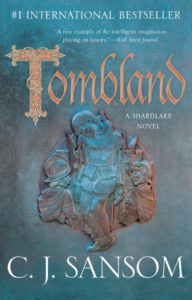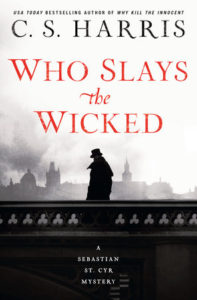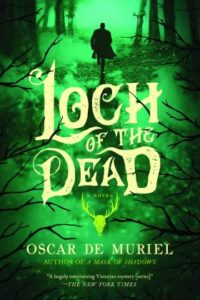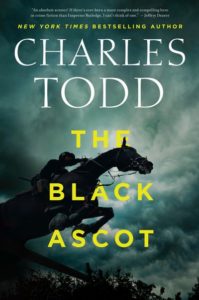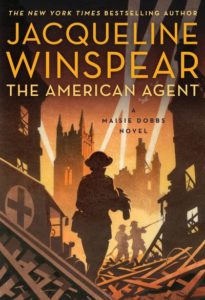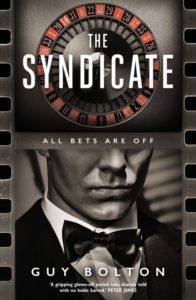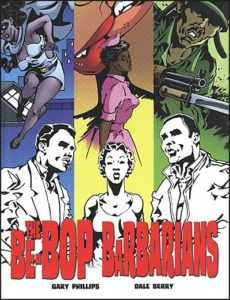Historical fiction is perhaps, the easiest genre to define and the hardest genre to get a grip on. Usually, historical fiction concerns events in the past that are beyond recent memory, and rely on the author’s research to bring to life. We all bring our own assumptions to the study of history, and historical fiction can sometimes get closer to the heart of historical experience than nonfiction tomes by burrowing into the beliefs of the time and creating a sense of immediacy.
The historical crime novel is particularly good at exposing the extremes of a time period; top-hatted gentlemen might dominate a comedy of manners set in the Victorian Era, but in a crime novel set in the same period, we’re as likely to see mud-drenched urchins filling up the pages. While fantasy and romance tend to feed into a rose-tinted view of the past, historical crime fiction, with its focus on citizenry in moments of crisis, is much more immune to nostalgia, presenting a version of the past that is plausible in its horrors and clear-sighted in its detail.
2019 is, so far, a banner year in historical titles. It’s no surprise that the 1920s and late 19th century are as popular as ever; in addition to these settings harking back to seminal moments in the development of crime novels, a focus on time periods known for their excess, hedonism, and extreme inequality makes even more sense in our new Trumpian Gilded Age. Added to the mix are new works set in Tudor England, late-18th Century Sweden, and the post-WWII Era.
C.J. Sansom, Tombland
London, 1549
The year is 1549, Henry VIII is recently deceased, and England is stewing in chaos. In the latest of C.J. Sansom’s Tudor-era mystery series, his enlightened detective, a lawyer working for young Queen Elizabeth (as yet to be crowned) journeys to a remote estate to investigate the death of one of his employer’s distant relatives, a political killing bound to stoke the flames of a kingdom in upheaval. You can read an exclusive excerpt here.
Niklas Natt och Dag, The Wolf and the Watchman
Stockholm, 1793
This incredibly disturbing trip into the grotesqueries of history is as well-written as it is well-researched, true to not only the detail of the time period but also true to its mores and atmosphere. At the start of Niklas Natt och Dag’s incredibly self-assured debut, a watchman in late 18th-century Sweden discovers a mutilated corpse floating in the local cesspool, and things only get darker from there. Written by a member of Sweden’s oldest living aristocratic family, and infused with a tear-it-all-down mentality, this one is not to be missed. You can read an exclusive excerpt here.
C. S. Harris, Who Slays the Wicked
London, 1814
Harris’ hero, Sebastian St. Cyr, investigates the murder of a dissolute nobleman suspected of kidnapping and killing a number street urchins. Suspected of the murder is the nobleman’s young wife, but Sebastian is sure that an enigmatic Russian countess and a secret underworld of wealthy pleasures are the true culprits. Set against the backdrop of Napoleon’s last battles, Who Slays the Wicked impeccably weaves fictional crimes into the (newly mechanized) warp and weft of Regency England.
Oscar de Muriel, Loch of the Dead
The Scottish Highlands, 1873
Oscar de Muriel takes us into the deadly and eccentric world of 19th century cures as his Edinburgh detectives face their most metaphysical mystery yet while escorting a young woman from an asylum to the mysterious waters of Loch Maree, said to cure distemper of the mind. Here, you can read an essay by Oscar de Muriel on the century’s most bizarre and fraudulent medical treatments.
Laura Joh Rowland, The Hangman’s Secret
London, 1890
This is the second in Rowland’s new Sarah Baine series, set in Victorian London. Baine works as a photographer when she’s not solving crimes with her loyal group of friends; in The Hangman’s Secret, Baine comes up against villain Amelia Carlisle, based on a number of late 19th century baby farmers who took in scores of young children only to kill them through slow neglect (or outright murder). Rowland is the author of two other historical crime fiction series: the San Ichiro mystery series, set in early 19th century Japan, and the Secrets of Charlotte Bronte series, in which Charlotte finds herself embroiled in many an investigation while romancing a secret agent.
Boris Akunin, The Coronation
Moscow, 1896
In the latest Boris Akunin mystery to feature Russian detective, Erast Fandorin, he investigates the abduction of a royal child against the backdrop of looming disaster at the coronation of Tsar Nicholas II at the end of the nineteenth century. There’s something brilliant in how Akunin weaves together his knowledge of history with the actions of his characters to create layers of historical detail that reward every level of knowledge in the reader. You can read an exclusive excerpt here.
Lyndsay Faye, The Paragon Hotel
Portland, Oregon, 1920s
If you meet Lyndsay Faye in person, you can immediately see why she’d be stellar at evoking the charming cadences of 1920s slang and the glamorous fashions of the era, and if you pick up her latest, The Paragon Hotel, you’ll find yourself rewarded with some of the most genuine, immediate, and entertaining evocations of an ever-fascinating era. When a gangster gamine is shot in her Harlem neighborhood, she flees to Portland and finds herself sheltering at the Paragon Hotel, the only Portland establishment hospitable to all visitors, in what quickly becomes both a fast-paced crime story and an indictment of early 20th century racism. Faye has previously stuck to the 19th century (and in particular, has a fondness for the 1840s), and we’re pleased to see that she’s just as capable when it comes to the 1920s.
Abir Mukherjee, Smoke and Ashes
Calcutta, 1921
Smoke and Ashes is the latest in Abir Mukherjee’s historical Calcutta-based mystery series, which finds opium-addicted Captain Sam Wyndham and his Indian Sergeant, Surrender-Not Banerjee, investigating a series of gruesome killings, while Wyndham tries (with varying degrees of success) to kick his nasty little habit once and for all. Mukherjee excels at conjuring the filth and corruption underpinning colonialism, and the sights and sounds of India in a time of rapid transition.
Charles Todd, The Black Ascot
England, 1921
From acclaimed historical crime writing duo Charles Todd, the pen name of a mother and son writing team, comes another installment of their Ian Rutlege series, as he tracks an elusive killer who’s evaded Scotland Yard for years. A tragedy at the racetracks could be the evidence he needs to find the killer, but he must go back to before the Great War to find the roots of his target’s crimes. You can read a guide to historical fiction through history from the authors here.
Phillip Kerr, Metropolis
Berlin, 1928
It’s a bittersweet pleasure to dive into the last Bernie Gunther mystery. After Kerr’s untimely death last year, it was announced that one more book would be released in the series: Metropolis, which takes us back to Bernie Gunther’s early days on the job, and concludes a 14-book-dive into the worst parts of 20th century history.
Jacqueline Winspear, The American Agent
London, 1940
In Winspear’s latest, The American Agent, her series protagonist Maisie Dobbs, an investigator and psychologist with quite a few forensic skills as well, investigates the murder of an American radio journalist against the backdrop of the London Blitz. Winspear has captured the entire interwar period through Maisie’s eyes, and should do an admirable job guiding us through the war in the next few installments of the series.
Guy Bolton, The Syndicate
Las Vegas, 1947
Guy Bolton takes us into the days of Golden Age Hollywood and Vegas, when the studio system was just starting to fade from its peak power, and gangsters and starlets still hobnobbed together at swanky hotels and hamburger joints. A Hollywood gangster heads to Vegas to resolve a tricky situation. Read this one if you love the sleazy world of mid-century glitz. Here, Guy Bolton takes us on a tour of some of Hollywood’s more glamorous underworld haunts.
Kate Quinn, The Huntress
USA, Post-WWII
Kate Quinn schools us on WWII’s greatest badasses: The Night Witches, an all-female night bomber unit who flew mission after mission in service of the Soviet Union’s fight against the Nazis. In The Huntress, a veteran of the Night Witches teams up with a British war-correspondent-turned-Nazi-hunter to track down a notorious war criminal. You can read an essay penned by Quinn about her real-life inspirations here.
Gary Phillips, The Be-Bop Barbarians
New York City, 1950s
Gary Phillips’ love song to the history of black comics is beautiful and moody, channelling the quiet desperation, simmering anger, and creative intensity of 1950s noir. The Be-Bop Barbarians follows several comics artists struggling to make it in the black press and get syndicated in the white press without having their ideas stolen or their work appropriated, in a story as beautifully told as it is illustrated. Phillips uses his 50s Harlem setting to explore the nexus of pop culture, politics, and protest. You can read an excerpt here.


